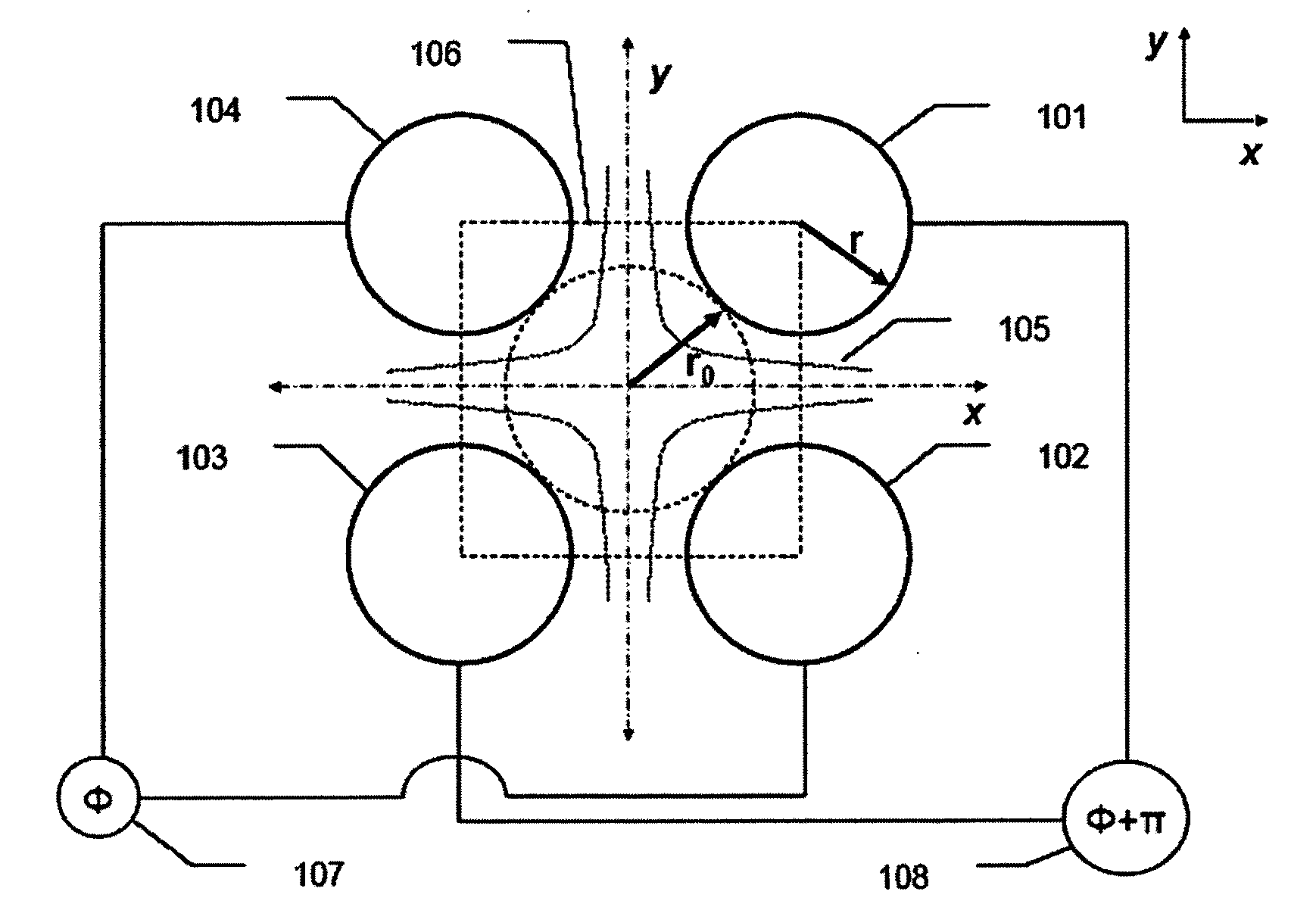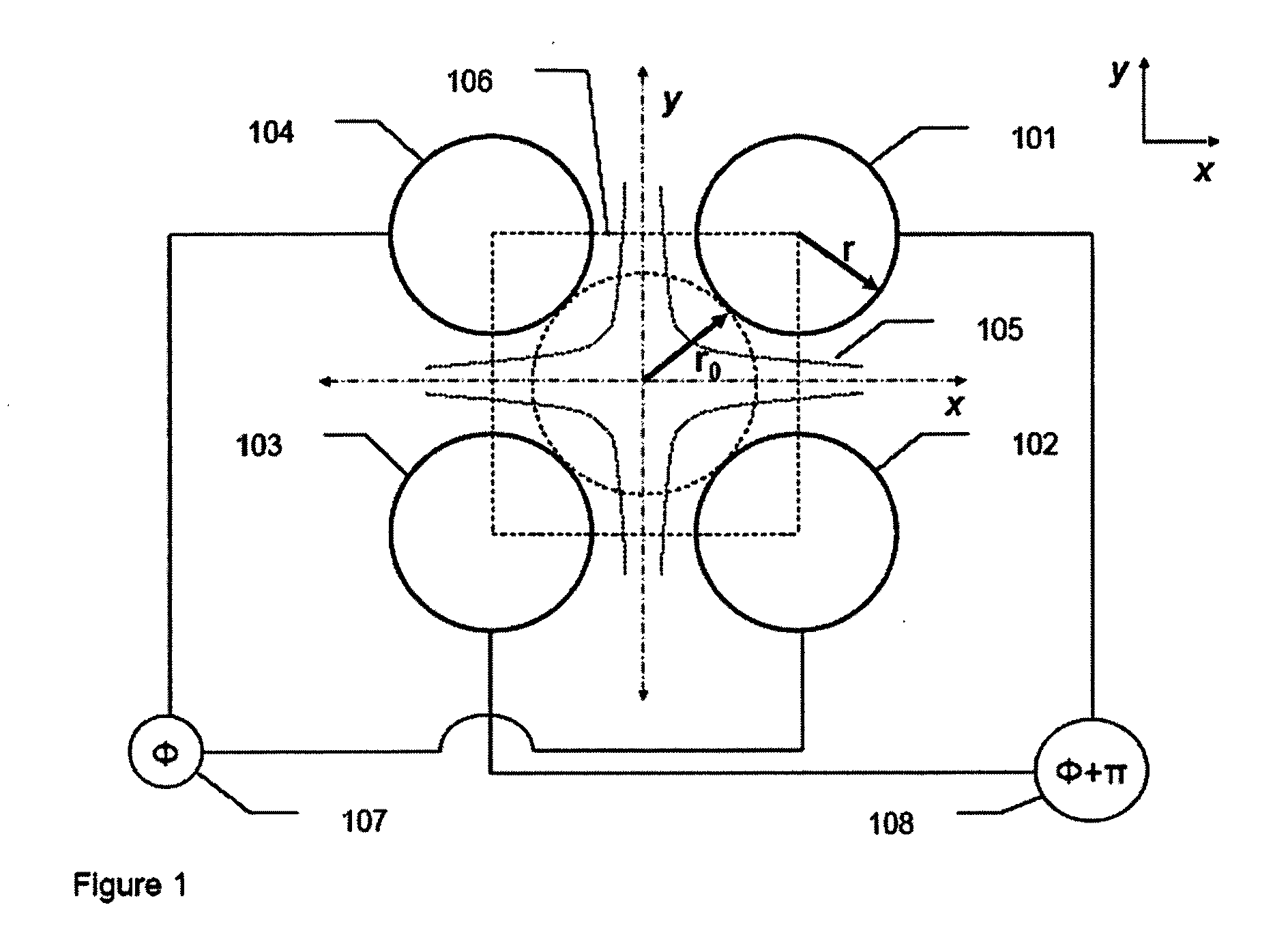Electrode structures
a technology of electro-electrodes and structures, applied in the field of electro-electrode structures, can solve the problems of not being able to detect the chemical species of interest with any degree of accuracy, and none of the commercially available portable mass spectrometer systems can reach the resolution, sensitivity or mass range of large conventional ‘benchtop’ mass spectrometer systems
- Summary
- Abstract
- Description
- Claims
- Application Information
AI Technical Summary
Benefits of technology
Problems solved by technology
Method used
Image
Examples
Embodiment Construction
[0078]A detailed description of preferred exemplary embodiments of the invention is provided with reference to FIGS. 1 to 28. It will be appreciated that these embodiments are exemplary and are provided to assist in an understanding of the teaching of the present specification but are not to be construed as limiting the invention in any fashion.
[0079]FIG. 1 is a cross section in the x-y plane of a quadrupole mass filter. Four circles 102, 102, 103 and 104 represent the four rods of the conventional quadrupole mass filter. The rods are connected to a RF voltage supply 107 and 108, and when the rods are driven by this supply an electrodynamic quadrupole field is generated between the rods. This field represented by the hyperbolic equipotential field lines 105, which is asymptotic to they and x axes at its extremities. The four circles 101, 102, 103 and 104 are tangentially intersected by an inscribed circle with a radius of r0. In a quadrupole, the centres of the four circles are equi...
PUM
 Login to View More
Login to View More Abstract
Description
Claims
Application Information
 Login to View More
Login to View More - R&D
- Intellectual Property
- Life Sciences
- Materials
- Tech Scout
- Unparalleled Data Quality
- Higher Quality Content
- 60% Fewer Hallucinations
Browse by: Latest US Patents, China's latest patents, Technical Efficacy Thesaurus, Application Domain, Technology Topic, Popular Technical Reports.
© 2025 PatSnap. All rights reserved.Legal|Privacy policy|Modern Slavery Act Transparency Statement|Sitemap|About US| Contact US: help@patsnap.com



